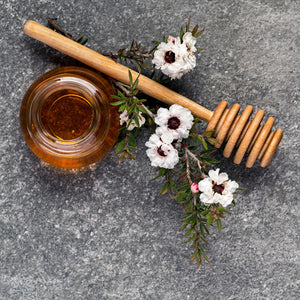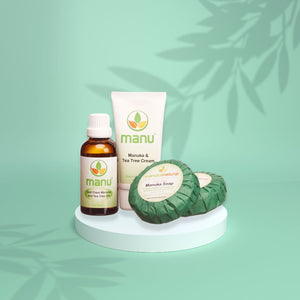
Bone on Bone Joint pain - how to treat it naturally
“Bone on Bone” is a phrase you may often hear from people with knee pain, hip pain, and hand joint pain. But also from boys and girls who push it a little too much with training.
However, “Bone on Bone” refers to the increased severity of OA (osteoarthritis) in joints. Or, as some people call it, a nagging joint paint pain in my knees and elbows.
And it can affect people of all ages.
So what is a solution for the bone-on-bone condition?
I’ll tell you something you wouldn’t think you would read here.
Not all solutions are in a bottle. Please first think hard about your daily exercise patterns, your ergonomics at work and play, and do daily stretching.
Ok, with that out of our way and thought that you tried above or can’t perform a daily exercise for some reason, here is another piece of advice you may be familiar with.
Glucosamine sulfate!
Glucosamine sulfate is a type of sugar that is part of various body tissues and is primarily found in cartilage. Cartilage is located on the surface of the bones, where the two bones join and form a joint.
Glucosamine sulfate is part of proteoglycans, which have elastic properties. These elastic properties are responsible for the elastic properties of cartilage.
Simple.
The main reason for pain in joints in people over 40 is arthrosis, which occurs due to loss of cartilage and a decrease in the elastic properties of cartilage.
Glucosamine sulfate, when taken as drugs or supplements, slows down the deterioration of cartilage. And gives you a bone-on-bone-free feeling.
How does glucosamine work for bone on bone?
As we said, glucosamine is a building block of cartilage. When you ingest it, it stimulates the production of hyaluronic acid and proteoglycans, i.e., the creation of new cartilage tissue.
The long-term effectiveness of glucosamine is comparable to that of non-steroidal anti-inflammatory drugs but with far fewer harmful effects.
In like manner, glucosamine reduces the production of enzymes that break down cartilage, often overactive in people with osteoarthritis.
Who is glucosamine recommended for?
Glucosamine is recommended for all patients with osteoarthritis.
A recent study confirmed that glucosamine might also help prevent it. So if you have intense training, glucosamine sulfate is for you.
Obese people, people who have a genetic predisposition for the development of arthritis, and people who have had traumatic joint damage (injuries to ligaments, meniscus, meniscus surgery) are also candidates for preventive use of glucosamine.
CAN I MIX GLUCOSAMINE WITH CHONDROITIN FOR MY BONE-ON-BONE ISSUE?
Some studies have shown that same-time administration of glucosamine and chondroitin may reduce the resorption of glucosamine. According to the recommendations of the World Osteoarthritis Association, you can use glucosamine preparations, or chondroitin, or a combination.
So we can’t argue that it is a bad thing to mix these two!
In ideal conditions, taking chondroitin preparation in the morning after breakfast and taking glucosamine supplement in the evening after dinner would be good. That way, there wouldn’t be mutual competition for adoption in the gut.
However, chondroitin can be formed from glucosamine in the body, so the question remains whether you should also take chondroitin.
Should fixing bone-on-bone osteo pain take two months?
For many people, yes, it should, but it may take even longer.
Please consider that glucosamine sulfate is an excellent aid in fixing your bone-on-bone feeling, but simply, some people can’t benefit from it.
Why is that? I can’t really say. I’m not familiar with the reason.
However, let’s look at some studies that acknowledge the benefits of glucosamine sulfate.
In one study conducted on 407 obese middle-aged women who were at high risk for developing osteoarthritis of the knee, the influence of diet, exercise, and glucosamine was examined (over 2.5 years ).
Administration of glucosamine or a combination of glucosamine and exercise decreased the risk of osteoarthritis by 40%. Interestingly, exercise and diet alone did not have a significant impact on the occurrence of osteoarthritis in this study.
A large PEGASUS study compared various chondroprotectors (crystalline glucosamine sulfate, glucosamine hydrochloride, chondroitin sulfate, soybean, and avocado oil). When applied, these ingredients were the only ones that provided less pain and less use of medications.
One more study that included 340 patients showed the percentage of patients ready for joint replacement surgery while using glucosamine sulfate. Of patients who took glucosamine, 57% were less likely to undergo replacement surgery joint.
A study that monitored cartilage thickness with magnetic resonance for six years has shown that glucosamine sulfate reduces the cartilage deterioration, but if you use it for at least two years.
Is taking glucosamine bad or good for people with diabetes?
Some animal studies have shown that high doses of glucosamine may affect insulin resistance.
However, a study on obese women showed that glucosamine does not affect the occurrence of diabetes and does not increase glycosylated hemoglobin levels. Therefore, it is now generally accepted that you can take glucosamine safely.
Due to the possible occurrence of nausea, it is recommended that you take glucosamine after a meal, and if you are a sensitive patient, you can divide it into two doses.
Deer antler velvet for bone on bone?
The rate of antler growth varies according to conditions but may be as high as six centimeters (2.5 inches) per day in the prime period. So it’s no wonder ancient medicine used it to relieve various health issues, including osteo problems.
It appears that the major causes of joint tissue decay are either injury or inflammatory cytokines degradation of the joint.
Supplements like deer antler velvet can alleviate pain by reducing inflammatory cytokines systemically.
That is because deer antler velvet has anti-inflammatory properties and is rich in some cartilage building blocks.
The glucosamine and chondroitin in Deer Velvet interact with the velvet growth factors, resulting in increased absorption of the chondroitin and glucosamine, thus making you more nimble within the hip and joint area.
In 1999, the chondroitin sulfate and type II collagen in velvet antler were scientifically substantiated by research and clinical studies, in compliance with US FDA regulations “to support healthy joint structure and function.”
Why should you consider deer antler velvet and not just take a glucosamine sulfate supplement?
Deer antler velvet is home to many things besides glucosamine sulfate.
Collagen – a significant structural protein present in bone, tendons, ligaments, other connective tissue, and articular cartilage
Chondroitin Sulphate – a carbohydrate that helps protect and rebuild degenerating cartilage and is a potent anti-inflammatory agent
Glycosphingolipids are compounds involved with cells’ growth, metabolism, memory, and learning.
Glucosamine sulfate – is a component of Chondrin Sulphate, a significant part of cartilage and synovial fluid.
Hyaluronic acid – a substance that binds cartilage cells together and lubricates joints.
Prostaglandins – hormone-like substances that produce a wide range of effects, including anti-inflammatory effects, within the body.
Phospholipids – the primary structural lipid in Velvet Antler – (healthy joint cartilage contains mainly phosphatidylcholine (41%),
phosphatidylethanolamine (27%), and sphingomyelin (32%) of total phospholipids).
Monoamine-oxidase inhibitors – an enzyme that inhibits the oxidation of neurotransmitters and promotes a feeling of well-being.
Second. Deer antler velvet is the home of famous HGH (human growth hormone).
And…
IGF-1 and HGH have both been shown to stimulate the growth and repair of adult articular cartilage. One reason for this cartilage growth can be that some cartilage cells have HGH receptors. (4)
Although growth hormone (GH) regulates cartilage growth and differentiation during development, it is still unclear whether the cell growth of articular chondrocytes is stimulated directly by GH or mediated by GH-induced insulin-like growth factor-I (IGF-I).
Deer antler velvet is an overflowing source of IGF-1. So, more people are using deer antler velvet to boost their IGF-1 levels naturally.
And third…
Deer antler velvet also contains a thing called Epidermal Growth Factor (EGF). Decades of studies have concluded that EGFR signaling plays an essential role in cartilage development.
In the end …
If not all-year-round, deer antler velvet may be helpful in bone on bone in winter (when due to less exposure to the sun, our body does not produce enough vitamin D, which is reflected on the bones).
It also serves as a prevention for people over 40 who are partly active due to a lot of sitting in the office.
But in the case of injury, there is a rich complex of ingredients in deer antler velvet naturally combined. Not only glucosamine but many other substances necessary for joints, cartilage, and tendons.
Please share this with your social media contacts or anyone you think could benefit from manuka honey.
ORIGINALLY PUBLISHED on blog.manukanatural.com



Leave a comment